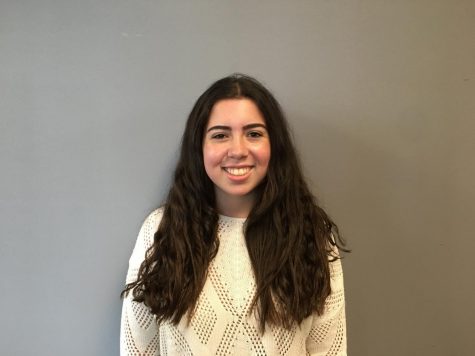Election Reflection
Upper School Students Share How They Prepared for Midterms
Images of the wristband clogged social media feeds from Snapchat to Instagram: a white paper bracelet stamped with “I Voted! Did You?” in patriotic red and blue ink. For the first time in their lives, much of the senior class was eligible to vote in the 2018 Midterm Election on Tuesday, November 6, and post the evidence of their own civic engagement.
During the election, 35 of the 100 seats in the Senate, all 435 seats in the House of Representatives, and 39 state and territorial governorships were contested in addition to hundreds of local elections. While the Republican Party maintained majority control of the Senate, Democrats riding the “blue wave” won control of the House of Representatives in addition to securing support in state and local elections.
In Illinois, Democrats Sean Casten and Lauren Underwood successfully flipped District 6 and District 14 to win thirteen of the eighteen House of Representative seats up for election. Democrat J.B. Pritzker beat incumbent Republican Bruce Rauner in the most expensive gubernatorial race in national history. Democrats also saw success in the elections for Attorney General, Secretary of State, Treasurer, and Comptroller.
Junior Jared Saef was the only student in his class eligible to vote. “It honestly felt a little surreal because I had just turned eighteen in early October, so I still hadn’t grasped the fact that I was a legal adult now,” Saef said. “It was a really cool experience walking into my voting precinct and thinking that, ‘Wow, I’m an adult, I can make these decisions for our democracy on my own.’”
For senior Lilah Schatz, the legalization of marijuana, supporting Democrats, and tax policy were key issues. “Voting for the first time was a very liberating feeling,” Schatz said. “The process was almost underwhelming because I thought that I would be waiting in a line for two hours, I thought that I would be filling out all this paperwork, I thought that I couldn’t bring my phone in, for example, but it was actually really easy and simple. Something I really enjoyed was seeing so many female names on the ballot because I want more women in politics.”
“I’m not a person who’s into politics,” senior Zen Lynch said. “Politics is absolutely, like, the worst thing for me to focus on. But this time I knew that I was going to be eighteen when the election rolled around. I had to be informed.” While Lynch said she felt prepared after reading Vote411.org and watching informative YouTube videos, she felt overwhelmed by the number of judges on the ballot and the different language used in that section.
Senior Audrey May voted for candidates who shared her stance on gun reform, marijuana legalization, and abortion laws. “When I was an election judge, we had a view voters who signed up, said they were going to vote, received the ballot, and said, ‘Oh no, I change my mind, I don’t want to vote at all.’” May said. “So I think that being an election judge, it’s interesting to see how people react when they get the ballot and see the other side being a voter.”
Saef cites reading the Chicago Tribune’s endorsements, conducting independent research on the candidates, and supporting the legalization of marijuana as the primary influences in how he cast his ballot. “If marijuana is legal, I think the government can regulate marijuana much more easily, instead of it being illegal, like in the Prohibition of alcohol where you saw all these black markets and illegal sales of alcohol occurring.”
May is one of a handful of Upper School students who were able to vote in the primaries last April and the Midterm Election. “For the governor, it’s not by electoral college or electoral votes, it’s by popular vote,” she said, “so it’s more important to vote in a midterm or primary election if you’re in a bigger state than it is to vote in a presidential election.”







